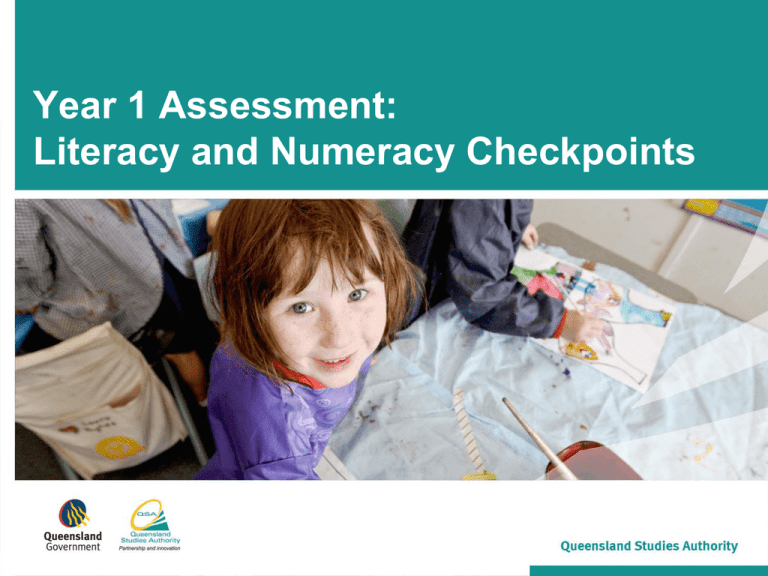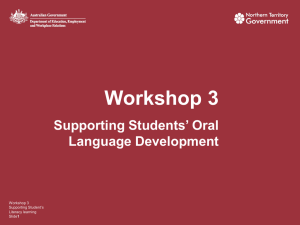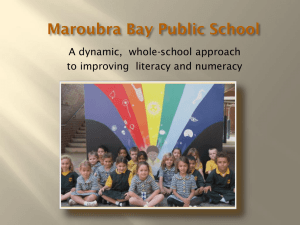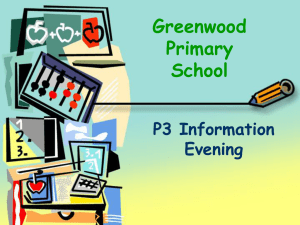Year 1 Assessment: Literacy and Numeracy Checkpoints
advertisement

Year 1 Assessment: Literacy and Numeracy Checkpoints Overview Year 1 Assessment: Literacy and Numeracy Checkpoints provide opportunities to gather evidence of the indicators at three monitoring points. February End of Preparatory Year Literacy and Numeracy Indicators June End of Year 1 Literacy and Numeracy Indicators October End of Year 1 Literacy and Numeracy Indicators Resources • Information statement • Checkpoint assessments for February, June and October • February work samples for Literacy and Numeracy • Data Analysis Assessment Record (DAAR) • Frequently asked questions • Future Directions All resources available at: www.qsa.qld.edu.au/11740.html. Information statement This statement provides information related to: • the purpose of assessment • assessment techniques • using data to inform future directions. February Checkpoint assessments The February Checkpoint assessments use the Prep Indicators to gather evidence of children’s literacy and numeracy learning during everyday experiences across learning areas. February work samples The February work samples: • assist teachers to interpret evidence of children’s demonstrations of the indicators • describe the teaching and learning contexts • provide annotations of teachers’ analysis of evidence. June Checkpoint assessments The June Checkpoint assessments use the Year 1 Indicators to gather evidence of children’s literacy and numeracy learning during everyday experiences across learning areas. June Checkpoint assessments — Literacy The diverse family • Viewing and Reading • Writing and Creating Spelling search • Writing and Creating June Checkpoint assessments — Numeracy Post office • Calculating and estimating • Using fractions, decimals, percentages, ratios and rates indicators • Using spatial reasoning • Using measurement Round the ridges • Using spatial reasoning Patterns in songs and games • Recognising and using patterns and relationships October Checkpoint assessments The October Checkpoint assessments for: • Numeracy use the same Year 1 indicators as the June Checkpoint assessments • Literacy use additional indicators for Writing and Creating and the same indicators as the June Checkpoint assessments for Speaking and Listening, Viewing and Reading. Teachers gather evidence of literacy and numeracy learning during everyday experiences across learning areas. October Checkpoint assessments — Literacy Shopping OR Shadows are everywhere! • Viewing and Reading • Writing and Creating Teachers select either Shopping or Shadows, which assess the same indicators. October Checkpoint assessments — Numeracy Shopping OR Shadows are everywhere! • Calculating and estimating • Recognising and using patterns and relationships • Using fractions, decimals, percentages, ratios and rates • Using spatial reasoning • Using measurement Teachers select either Shopping or Shadows, which assess the same indicators. Data Analysis Assessment Record (DAAR) Teachers: • make a Yes/No judgment about each indicator selected • record children’s demonstration of each indicator on the DAAR • analyse the data to inform future teaching and learning. Future Directions This information provides suggestions for planning future literacy and numeracy learning. Teachers use analysed data from the Checkpoint assessments to determine the focus for explicit teaching in literacy or numeracy.






